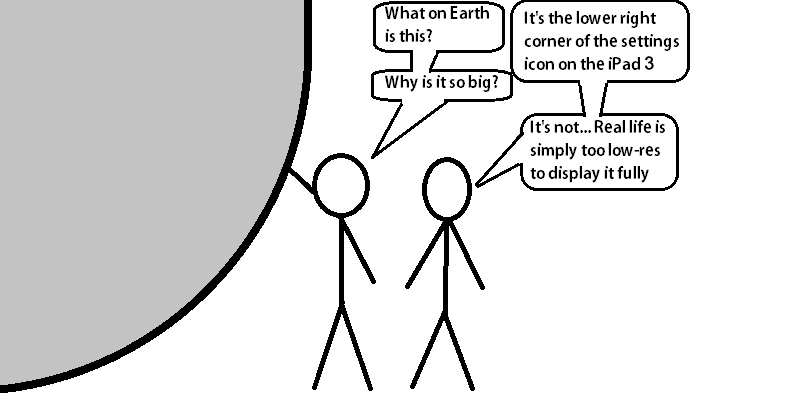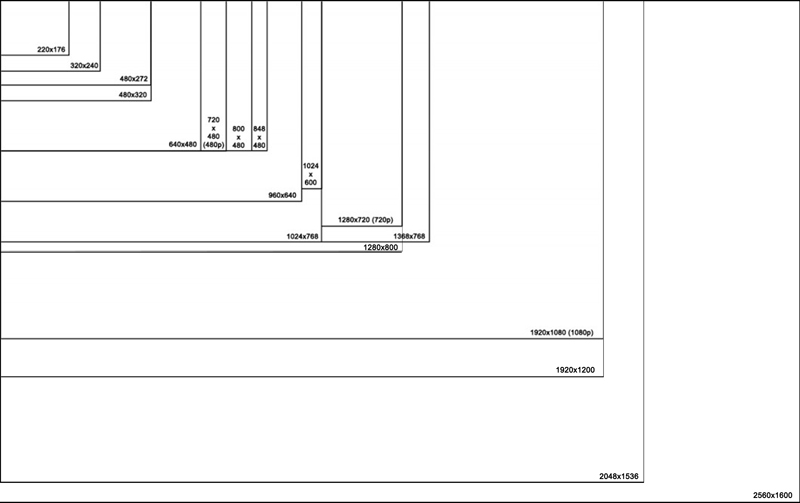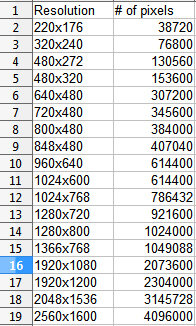Tablets and screen resolution

This article was originally published in December 2010. In view of the upcoming resolution revolution that is coming this year, it has been updated and re-published.
2011 was the year of the chipset wars. When the year started, the iPad 1′ and original Galaxy Tab’s 1GHz CPUs were still considered good. When the year ended, everyone was eyeballing the Transformer Prime’s quad core chip, not to mention the GPU upgrades that happened over the course of 2011. It was the year when tablets finally got fast enough to do what they were intended to do, at least if you ignore the Tegra 2 (and worse) powered antiquities that are still being sold.
2012 will be the year of the screen resolution wars. Chipsets will still get better, but if CES and a variety of rumors and pre-release information of upcoming tablets is any indication, resolution is where it really matters this year. While 1920 x 1200 sounds epic compared to the 1280 x 800 you find on tablets today, even that will sound low-res when the 2560 x 1600 panels start showing up in tablets. The question that remains to be answered is whether we need it.



Many things in computers follow Moore’s law, but not screen resolutions. 15 years ago you had CRT monitors with 1024 x 768 pixels, which is ironically less than most netbooks today and even the most high res monitors today only have 3-4 times the number of pixels. Over the last half a decade, tablets (meaning media players, UMPCs, and the first year worth of what we now call tablets) have tended to be well below the resolution of expensive TVs and computer monitors, around 800 x 480 – 1280 x 800. This is now changing, with new tablets breaking out of the old “resolution rot” and skyrocketing up beyond what there’s even content for.
In the table above, some notable tablet examples are the Samsung Galaxy Tab 7.0 Plus/Kindle Fire/etc (1024 x 600), iPad 1/2 and HP TouchPad (1024 x 768), pretty much every 10.1″ Android tablet from 2011 (1280 x 800), the upcoming Asus Transformer Prime HD (1920 x 1200), the rumored iPad 3 (2048 x 1536), and the corresponding 4x increase in resolution for Android (2560 x 1600). While there has still been enough of a difference between e.g. 1024 x 768 and 1280 x 800 to make the latter stand out, the kind of leaps we’re going to see this year is in a league of its own.
Resolution obviously has an impact on things like media playback and web browsing, but the aspect of a tablet that is most dependent on the resolution is viewing files that were originally formatted for paper. This can include scanned documents and PDF files, magazines, newspapers etc. Ebooks and other digital content (like apps) always have the option to adjust the font size to compensate for a low resolution screen, but if you have a PDF of a newspaper or something similar you’re basically stuck with the layout that is there. Anything that was originally designed for the A4 paper format or larger with normal font sizes will be hard or impossible to read on anything below 768×1024, unless you zoom and pan. The Kindle Fire can attest to this, as its usefulness for magazines and comics is far below what many buyers hoped it would be. Zooming and panning is of course possible, but the image often has to re-render properly every time you do (especially with PDF files and similar formats, like Zinio) and it’s not the same experience as being able to display it all full screen.
The resolutions we’re seeing now however go far beyond just being able to view documents without zooming. The highest resolution tablet screen on the horizon now is the 2560 x 1600 panel, which is a whopping 4 million pixels (4 megapixels) if you count the pixels. That’s twice the number of pixels that you find on the highest resolution consumer TVs, and twice the resolution that video content is being produced for. Aspect ratio issues aside, you could fit two Blu Ray quality 16:9 videos on the same screen with that kind of resolution, without scaling anything down. That’s the kind of thing that makes me stare blankly into the air and wonder what the heck the point is. The same goes for web browsing; when was the last time you saw a 2560 pixel wide web page? Or even 1600 pixels? Thought so.
Games is another great example. Towards the end of 2011, games on mobile devices finally started focusing on the right aspect of graphics. Things like polygon count, lighting effects and texture resolutions helped make games like ShadowGun look so much better than most other games while still being the same resolution. GTA III was released and people went nuts for the first “current generation” PC game that was released for mobile, even though many devices can’t run the mobile version with max settings. With the GPU in 2012 tablets again being forced to deal with screen resolution before anything else, I’m not at all sure that we will see the kind of game progress that we could have seen this year if resolutions had stayed at a more sane level.
There are of course aspects of a tablet that will beyond any doubt be better with higher resolutions, assuming they don’t mess up the screen in the process. Image viewing is one example, and if we start seeing better cameras on tablets then that will really be a nice use for that kind of resolution. UI elements is another, as it’s impossible to deny that high pixel density icons look better than lox pixel density ones. Still, the thing about touch screen devices is that UI elements have to be a certain physical size to be easy to operate with fingers, so it’s not like on e.g. Windows where 2560 x 1600 pixels would have been an epic screen to work with in e.g. Photoshop. Bump the iPad’s resolution up four times and icons have to be bumped up four times too, or they will be smaller than before. Simple math.
Bottom line, I would strongly encourage people to look at the resolution specification of new tablets with some skepticism. Higher resolution normally means that things will generally look better, but it rarely means that you can start doing things you couldn’t previously do (unless you move from a very low resolution device). With the kind of resolution leaps we’re seeing on the horizon now, I doubt you could even say that when you compare e.g. 2560 x 1600 and 2048 x 1536. I would love a 10-inch tablet with a 1920 x 1200 resolution, but anything above that I would rather trade in for better overall performance.

